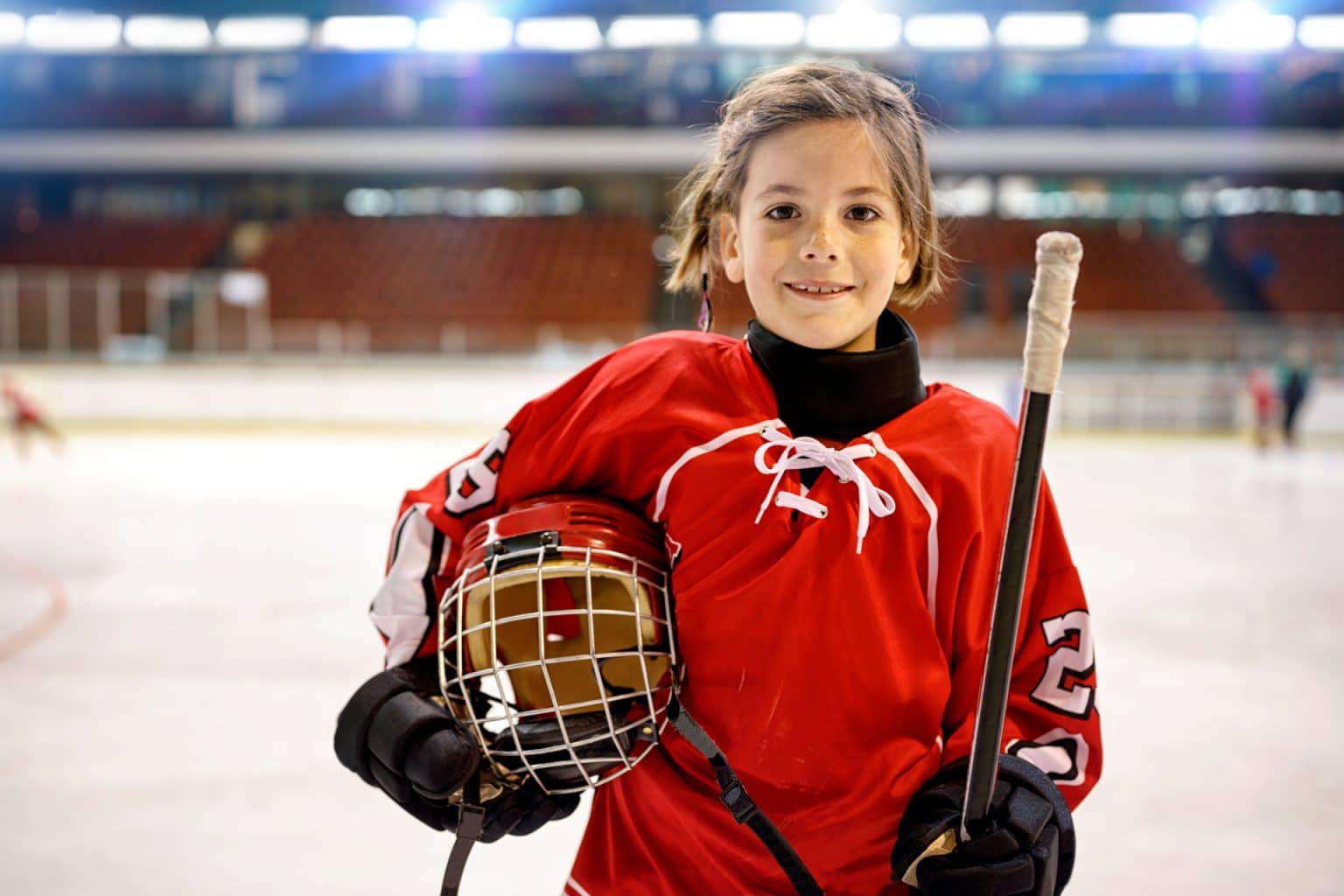My husband and I don’t have many common athletic pursuits, but we both play recreational hockey. He played as a kid and now goes to weekly pick-up games, while I was a devoted NHL fan (even working at Hockey Night in Canada during university) before joining a women’s rec league in my early 20s.
As newlyweds, we eagerly attended our twin nephews’ minor hockey games and assumed that our own kids would play hockey, too. When our son was born, we dressed him in pyjamas with tiny hockey players on them, and my husband proactively bought skates from yard sales. However, at age four, when we took our son to the rink, the interest wasn’t there. Another little guy in a Sidney Crosby jersey zipped around effortlessly, while my son kept asking to take a break in the penalty box. This scene repeated itself every time we took him to the rink.
Baffled, we turned to family and friends for advice. Our nephews—and their younger sister—were all playing high-level competitive hockey, and their mom, Karen Kueneman, praised the benefits of the sport.
“Putting our kids in hockey has been one of the best things we've ever done,” she says. “Skating has enhanced their balance, coordination and agility, which transfer into other sports. Through hockey, they’ve built meaningful friendships and learned about work ethic, team play and resilience.” That’s high praise.
Our neighbour, Michelle Cohen, said that she and her husband both grew up in smaller Ontario communities where skating and hockey were a dominant part of the culture. In keeping with the family tradition, the Cohens registered their two sons—one played for five years and the other for three. Michelle remembers: “Neither one showed much interest, but we pushed on because we believed skating to be a skill that they would be thankful for when they were older.”
Even though she grew up around hockey, Michelle says she now has a different view of it. “I teach my children that pushing, hitting, and using harmful words are not the right way to resolve conflicts. I have ethical and moral issues with a sport that teaches these things as part of the game.”
Now that the Cohens live in a larger city, with a wider variety of organized sports available, their younger son has traded hockey for soccer and basketball.
Another family on our street, the Martins, made a conscious decision not to offer hockey as an option for their two kids. “The hectic schedule and travel was not something we wanted for our family,” says mom Susan. “Also, the risk of injury and the environment of the arena with aggressive parents and coaches was not desirable.”
Like Michelle, Susan grew up in a “hockey town” and felt it was important that her kids learned to skate for recreational enjoyment.
“We took the kids skating at the local rinks as part of family time. We tend to choose sports that our family can do together, such as snowshoeing, skiing, swimming and cycling.” In fact, last summer they participated in the Go Bike Montreal Festival, with all four family members riding the 25-km route.
After listening to the various perspectives, I still fretted that we were somehow hypocritical parents if we didn’t register our son in a sport that both of us play. I asked Karen, the full-fledged hockey parent, if she thought all kids should learn to skate and play hockey. “Not necessarily,” she said. “Many activities can provide the benefits that sports offer. None of the positive effects are going to happen if the kids don’t love what they’re doing.”
With that in mind, we took a step back and looked for activities that suited our son’s personality. So far, he seems to be keen on baseball and golf—luckily, these are sports where my husband is already quite proficient. Looks like I better get working on my swing.
Taking Up Skating
Donna King, Program Advisor at Skate Canada, shares the following tips if your child is just starting out on blades.
- Kids can start learning to skate at any age as long as they have the ankle strength to walk on skates on the floor. Children are ready for group instruction when they have the maturity and social skills to participate in a group environment. No one is ever too old to learn to skate!
- Dress your skater in layers (as opposed to a bulky snowsuit) to ensure comfort and freedom of movement. Other than that, a CSA-approved hockey helmet and properly fitted skates are all that is needed.
- Be patient and allow some time for the child to become comfortable. In a learn-to-skate program like CanSkate, children tend to settle in after the first few weeks when they are placed in the proper groups and become familiar with the on-ice routines. From there, they can enjoy their instructor, the upbeat music, the colourful teaching aids and the fun activities.
- Think of skating as a springboard to other possible ice sports, including figure skating, hockey, speed skating, ringette or simply skating for pleasure on outdoor rinks and ponds. It is an excellent lifelong activity that promotes fitness and a healthy lifestyle.
Originally published in ParentsCanada magazine, December 2014.










